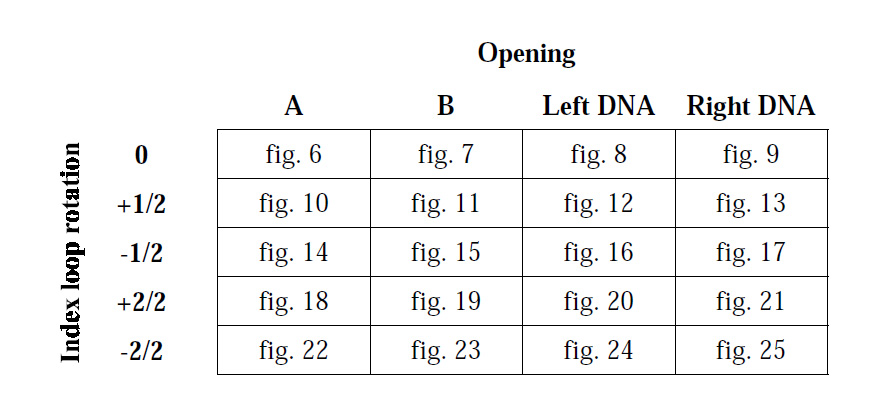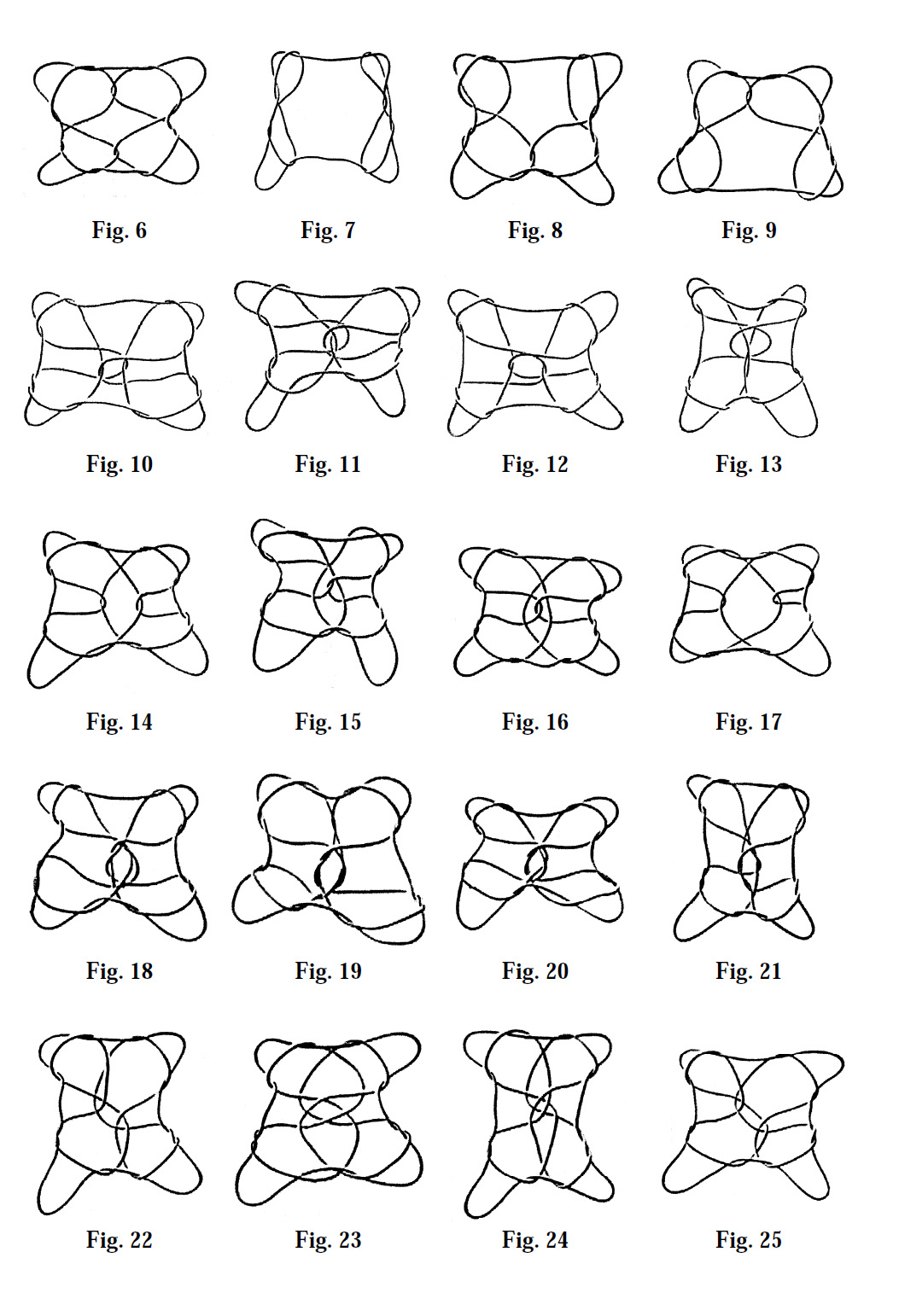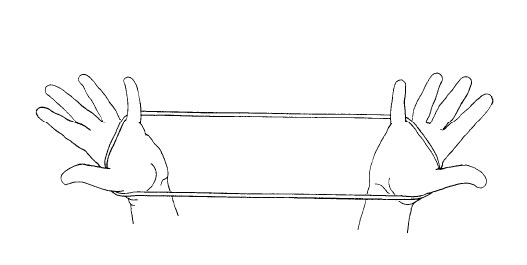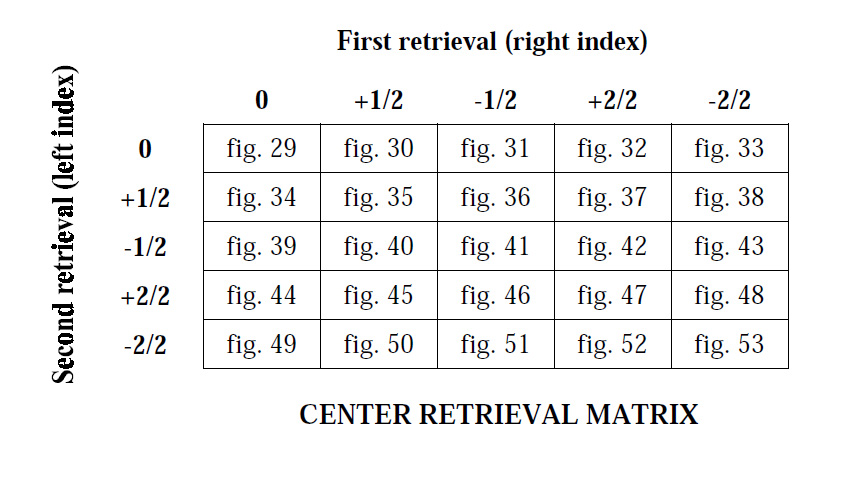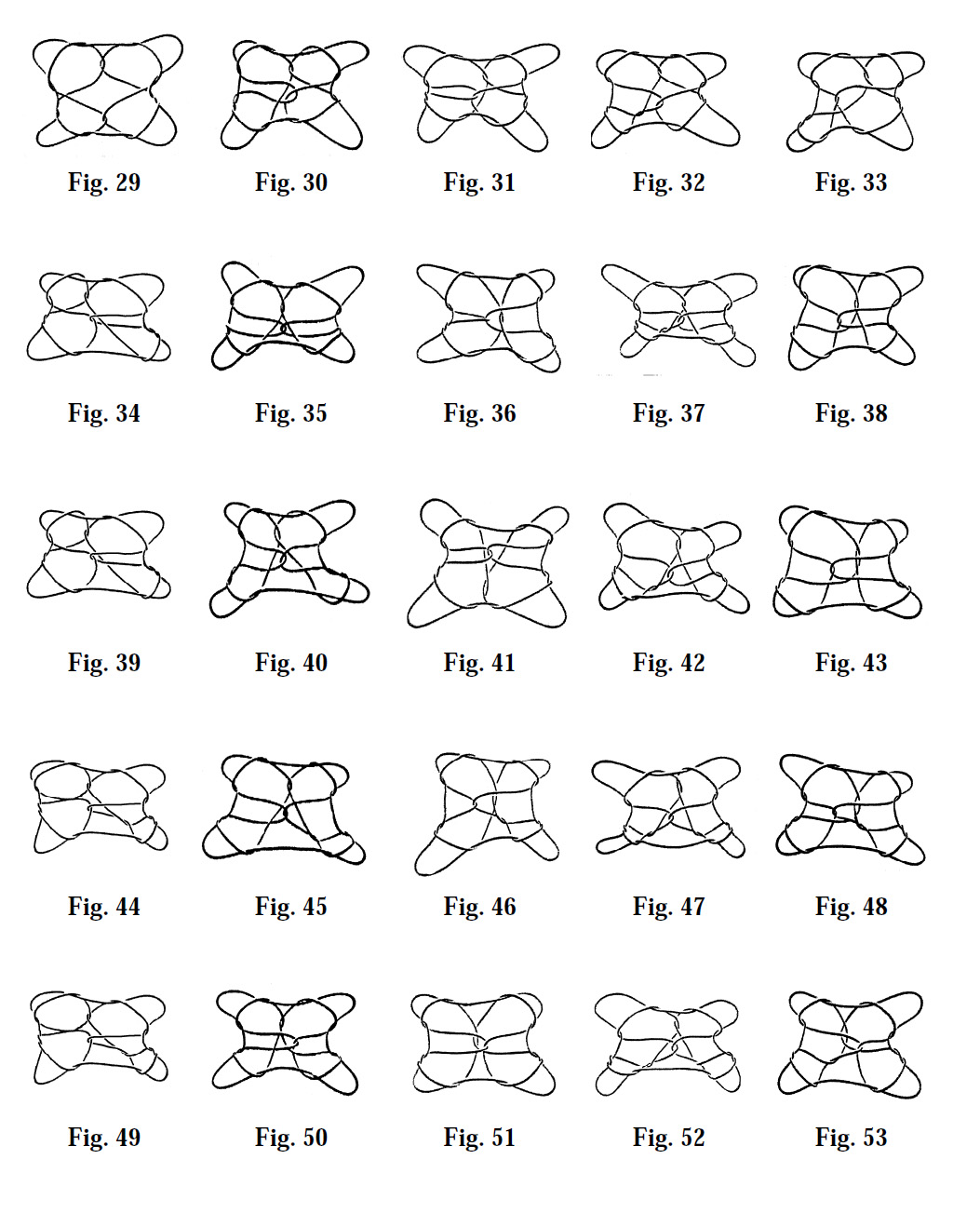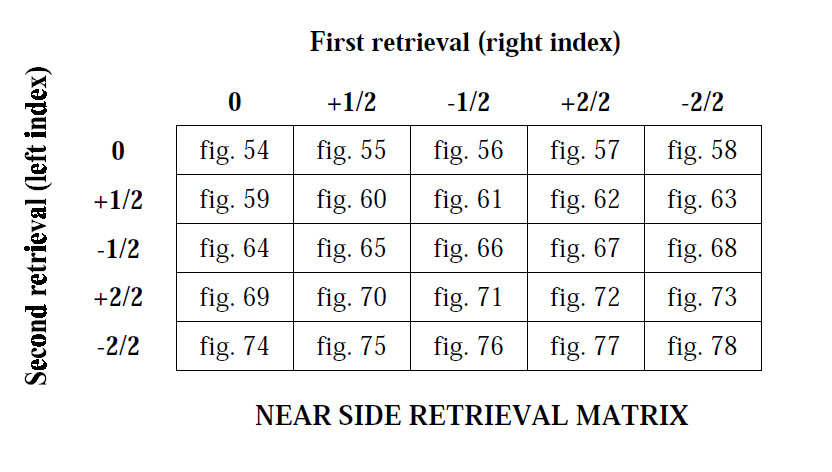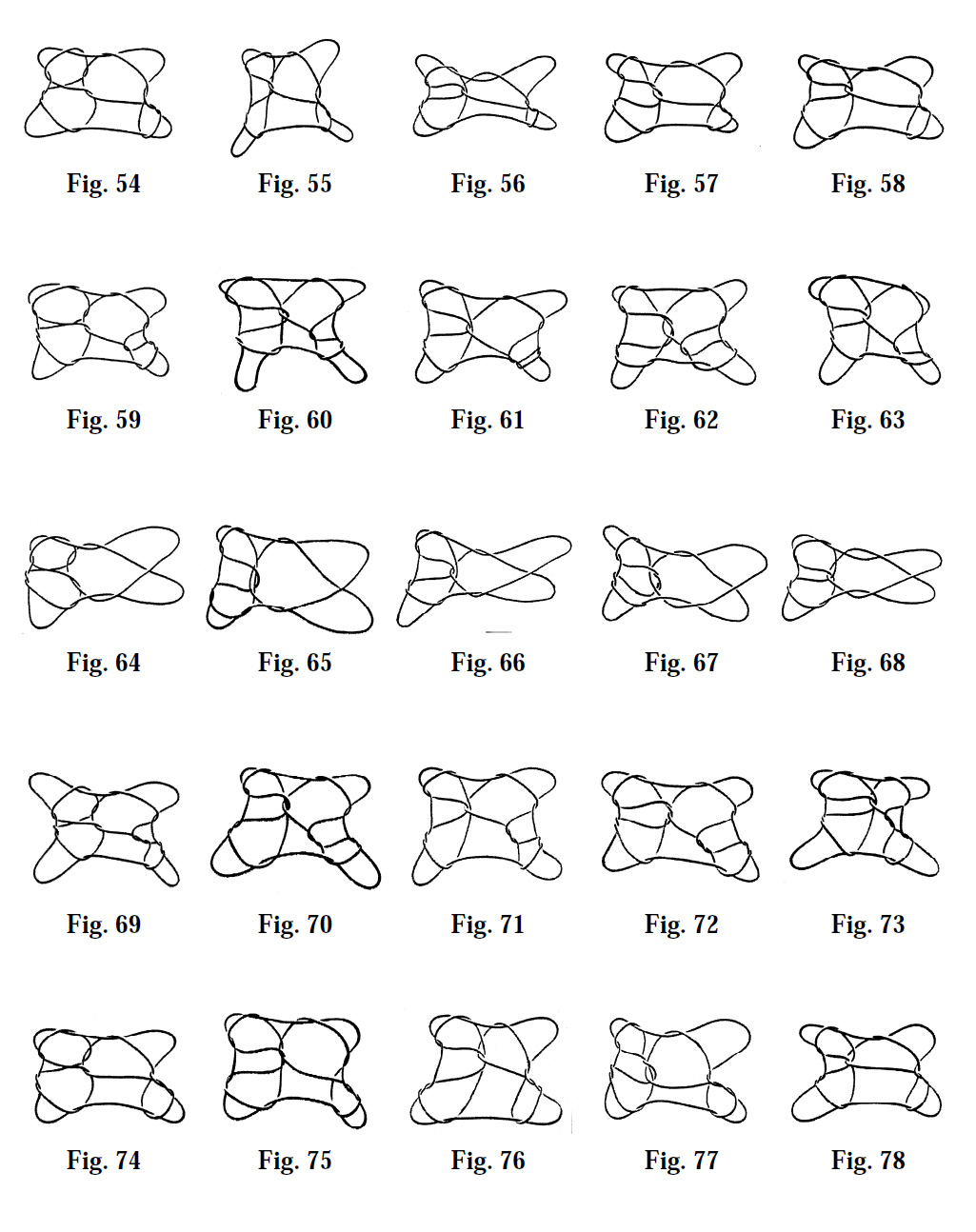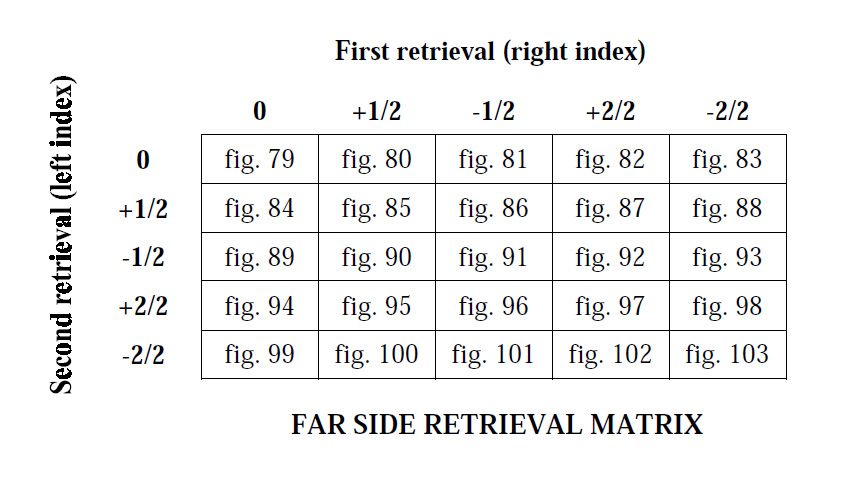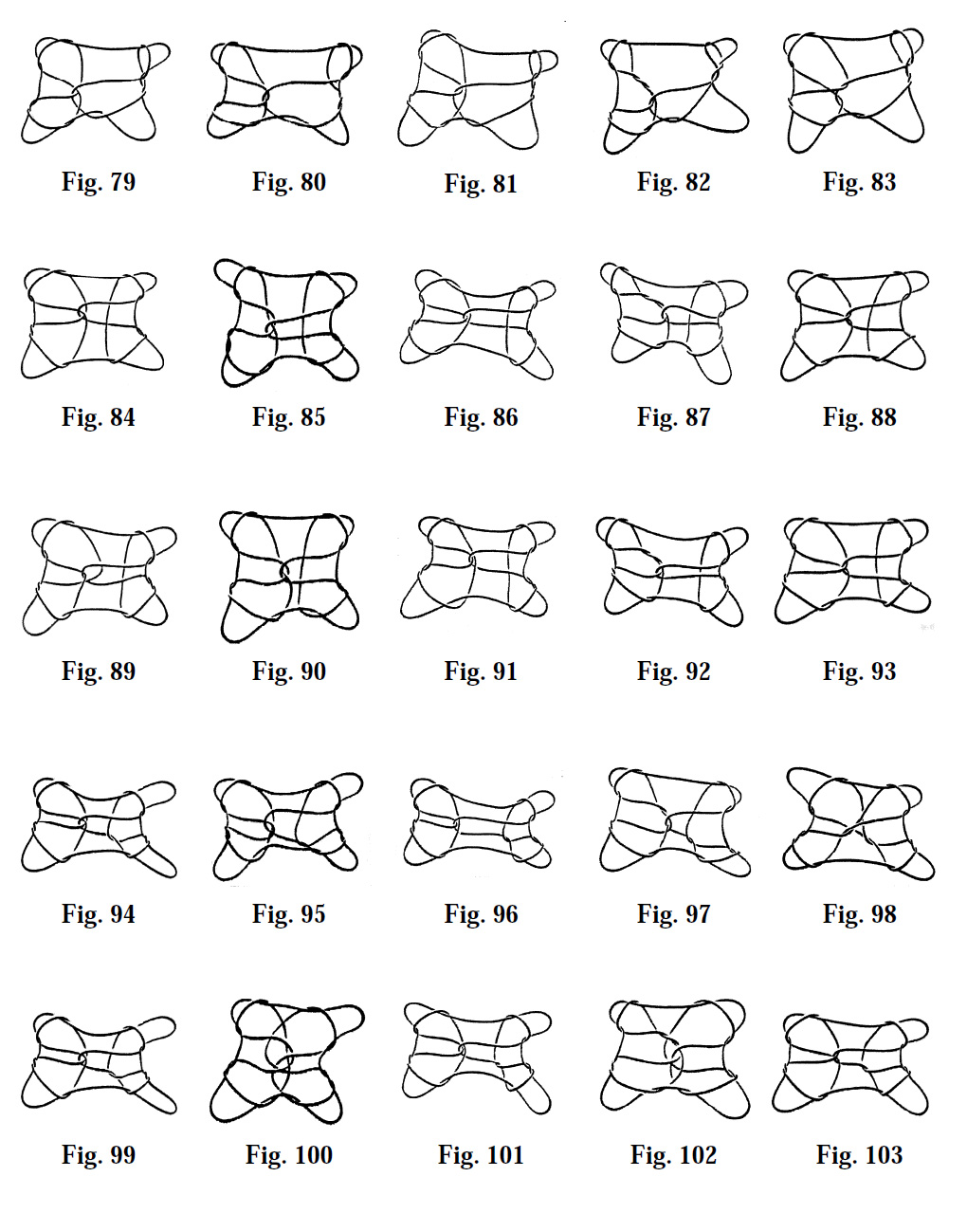http://youtu.be/-I-WQsrkzfY
In this video I introduce forming figures which are asymmetrical. Note there are a few errors in my explanation. See if you can spot them. The explanation of these figures below is all correct.
In the manufacture of most traditional string figures both hands act in unison. But in the following section I explore the consequences of asymmetric moves (i.e., the right hand doing something different from the left hand). For purposes of illustration we will work with the Opening A version of our canonical figure. At least two moves in the canonical weaving sequence can be accomplished asymmetrically:
(1) The index loop rotations (i.e., the right and left index loops can be rotated a half turn (or full turn!) in the same direction or in opposite directions)
(2) The retrieval of right palmar string during the loom formation (i.e., through the right index loop or outside of it)
First we look at (1) above which usually results in a symmetric figure.
ASYMMETRIC INDEX LOOP ROTATIONS
In previous formations of figures, index loop rotations were introduced after the loom was formed. But in this section, they are introduced as the loom is formed (i.e., during the palmar string retrievals).
First, begin Opening A in the standard way by establishing Position 1:
• Place both thumbs into the loop of string from below.
• Introduce the little fingers into the loop from below (this results in the formation of a palmar string).
Next, the right hand reaches to the left palm, and retrieves the left palmar string in one of the following ways:
• 0 rotation: The right index retrieves the left palmar string from below and returns to position.
• +1/2 rotation: The right index retrieves the left palmar string from above, then rotates a half turn toward the body so that the finger is upright, and returns to position.
• -1/2 rotation: The right index retrieves the left palmar string from above, then rotates a half turn away from the body so that the finger is upright, and returns to position.
• +2/2 rotation: The right index retrieves the left palmar string from below, then rotates a full turn away from the body (avoiding other strings), and returns to position.
• -2/2 rotation: The right index retrieves the left palmar string from below, then rotates a full turn toward the body (avoiding other strings), and returns to position.
• Once the left palmar string taken up, the retrieval of the right palmar string is likewise achieved using any of the five options listed above.
ASYMMETRIC RIGHT PALMAR STRING RETRIEVALS
In Opening A, once the left palmar string is taken up, the right palmar string is usually retrieved symmetrically by first passing the left index down through the right index loop. But it can also be retrieved asymmetrically by passing the left index to the near side or far side of the right index loop rather than through it. These three options are defined as follows:
• Center retrieval: The left hand reaches to the right palm, passes through the right index loop from above, retrieves the right palmar string (from above or from below, with or without rotation), and returns.
• Near side retrieval: The left hand reaches to the right palm, passes to the thumb side (the near side) of the right index loop, retrieves the right palmar string (from above or from below, with or without rotation), and returns.
• Far side retrieval: The left hand reaches to the right palm, passes to the little finger side (the far side) of the right index loop, retrieves the right palmar string (from above or from below, with or without rotation), and returns.
MATRICES FOR EXPLORING ASYMMETRY
Since asymmetric loop rotations and right palmar string retrievals can occur in the same canonical weaving sequence, three 5-by-5 matrices are required to explore all combinations. All 75 figures are shown below. After the opening they are formed by using the canonical figure procedure as in the lesson before.

